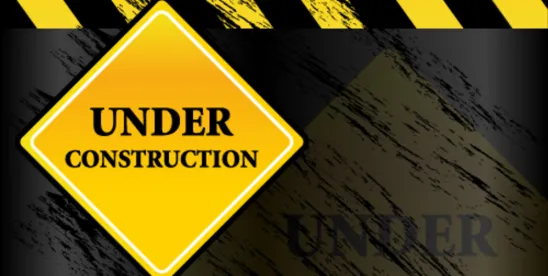On 4 July 2025, President Donald Trump signed the Republican budget reconciliation bill, known as the “One Big Beautiful Bill Act” (OBBBA), Pub. L. No. 119-21 into law. Consistent with past law, certain provisions in the legislation require a taxpayer to establish the beginning of construction (BOC) to qualify for tax credits and deductions.1 For example, under the OBBBA, wind and solar facilities that begin construction after 4 July 2026 and are placed in service after 31 December 2027 cannot receive the Section 45Y or Section 48E credit; for the Section 45V credit, construction must begin by 31 December 2027. Rules requiring application of a material assistance cost ratio (MACR) generally apply to those facilities beginning construction after 31 December 2025. Eligibility for the new full expensing deduction for manufacturing facilities requires construction to begin after 19 June 2025.
Taxpayers have long relied on Internal Revenue Service (IRS) notices to establish BOC. However, changes made by the OBBBA to the statutory framework and an executive order issued closely following enactment have thrown this standard into flux. This alert discusses those changes and how potential guidance from the US Department of the Treasury (Treasury) may impact long-standing BOC principles.
Legislative References to BOC Guidance
During congressional consideration of the energy provisions of the OBBBA, competing timelines were put forward regarding the termination of the clean energy provisions. Certain members sought to impose a fixed “placed-in-service” date. Others, together with many industry stakeholders, argued a BOC date was more appropriate, allowing projects already underway to be completed without having to meet an accelerated placed-in-service timeline.
The enacted version of the OBBBA generally relies on BOC rather than placed-in-service dates. Under the MACR rules, the legislation provides that BOC will be determined in accordance with “rules similar to the rules under Internal Revenue Service Notice 2013-29 and Internal Revenue Service Notice 2018-59 (as well as any subsequently issued guidance clarifying, modifying, or updating either such Notice), as in effect on January 1, 2025.”2 These references were, as Sen. Chuck Grassley (R-IA) put it, “intended to grant the wind and solar industries a yearlong transition to confidently move forward with planned projects under the existing continuity safe harbor and the beginning of construction guidance in effect at the time of the law’s enactment.”3 For non-MACR purposes, however, the OBBBA does not reference the BOC rules. While stakeholders assumed that the IRS notices would continue to be the benchmark for determining whether construction had begun, the executive order issued by President Trump on 7 July 2025 has thrown that confidence into doubt.
Long-Standing IRS Principles
Under Notice 2013-29, the IRS established two tests under which a taxpayer might establish that it had begun the construction necessary to qualify for either the production tax credit under Section 45 or the energy investment tax credit under Section 48. The first test requires starting physical work of a “significant nature.” To satisfy this test, which focuses on the nature of the work rather than its cost, the physical work can be completed on- or off-site by the taxpayer (or by a contracted third party). Preliminary work—planning or designing, securing financing, obtaining permits, and the like—does not count. The second test established under Notice 2013-29, the safe harbor test, provides that construction commences when the taxpayer incurs 5% or more of the total cost of the facility. Any cost includable in the depreciable basis of the facility counts toward the 5% threshold, but the cost of the land or any property not integral to the facility does not.
A taxpayer must only satisfy either the physical work or safe harbor test under Notice 2013-29 to establish BOC. Once the BOC date is established, the taxpayer must “maintain a continuous program of construction” on the project. To ease the administrative burden of tracking these activities, the IRS issued a clarification to Notice 2013-29 offering a safe harbor, which presumes a project satisfies the continuity requirement if it is placed in service within a certain number of years after construction begins, generally four years.4
The IRS subsequently issued Notice 2018-59 in response to changes to Section 48, as modified by the Bipartisan Budget Act of 2018,5 specifically a shift from placing a qualifying facility in service to a BOC standard as the threshold to determine eligibility. Notice 2018-59 closely follows the guidelines set out by its predecessor Notice 2013-29, including the physical work and 5% safe harbor tests.
President Trump Weighs In
Despite the IRS notices, an executive order issued by President Trump three days after signing the OBBBA into law has cast considerable uncertainty into the criteria necessary to establish BOC for non-MACR purposes. The executive order directs the Treasury Secretary to, within 45 days from 4 July 2025:
take all action as [he] deems necessary and appropriate to strictly enforce the termination of the clean electricity production and investment tax credits under sections 45Y and 48E of the Internal Revenue Code for wind and solar facilities. This includes issuing new and revised guidance . . . to ensure that policies concerning the “beginning of construction” are not circumvented, including by preventing the artificial acceleration or manipulation of eligibility and by restricting the use of broad safe harbors unless a substantial portion of a subject facility has been built.6
The executive order may be the product of a deal President Trump struck with fiscal conservatives who thought the final version of the bill was not restrictive enough on clean energy. For instance, members of the House Freedom Caucus met with President Trump before voting to pass the bill. Following that meeting, Rep. Chip Roy (R-TX) reported that “the Murkowski language that got put in there that would put that ‘in construction’ language—the year—that we thought was not particularly helpful or good policy to achieve what we and the president want to achieve. I think there’s going to be some things there that they’re going to be able to do.” Rep. Ralph Norman (R-SC) echoed this conclusion, saying, “We wanted date of service, which means they can’t take a backhoe out there and dig a ditch and say that’s construction. So things like that the president is going to enforce.”
The 45-day period set forth in the executive order expires on 18 August2025. It remains unclear to what extent Treasury will alter the existing BOC guidance and under what format Treasury will choose to do so. Market participants, however, should recognize that any of the standards in those notices, including the 5% safe harbor, the significant construction, and the continuity of construction, could be revised. Changes could include, for instance, increasing the safe harbor percentage rate, imposing stricter standards on site work, and modifying the continuous construction safe harbor. It is also unclear whether any revisions to the BOC rules will be limited to clean energy tax credits. Guidance could take the form of another IRS notice, FAQs, or other means. Whatever the changes, they are expected to make it more difficult to meet the BOC threshold on which many the OBBBA provisions rely.
Given the brief period provided under the OBBBA to establish BOC and qualify for the relevant tax incentives, taxpayers will need to quickly assess the impact of the guidance on their projects. Please contact any of the authors of this alert and our team of lawyers and policy professionals to assist you in navigating this evolving landscape.
Footnotes
1 While most attention is focused on the application of these rules to wind and solar facilities, the BOC rules implicate a variety of Internal Revenue Code provisions, including, for instance, Sections 45Y, 48E, 45V, and the new Section 168(n) deduction for manufacturing facilities, among others.
2 Pub. L. No. 119-21, Sec. 70512; see IRS Notice 2013-29, https://www.irs.gov/pub/irs-drop/n-13-29.pdf and IRS Notice 2018-59, https://www.irs.gov/pub/irs-drop/n-18-59.pdf.
3 Statement of Senator Grassley, S4618, Congressional Record (July 23, 2025).
4 IRS Notice 2013-60, https://www.irs.gov/pub/irs-drop/n-13-60.pdf.
5 The Bipartisan Budget Act of 2018, Pub. L. No. 115-123 (2018).
6 Executive Order 14315, Ending Market Distorting Subsidies For Unreliable, Foreign Controlled Energy Sources.









 />i
/>i
